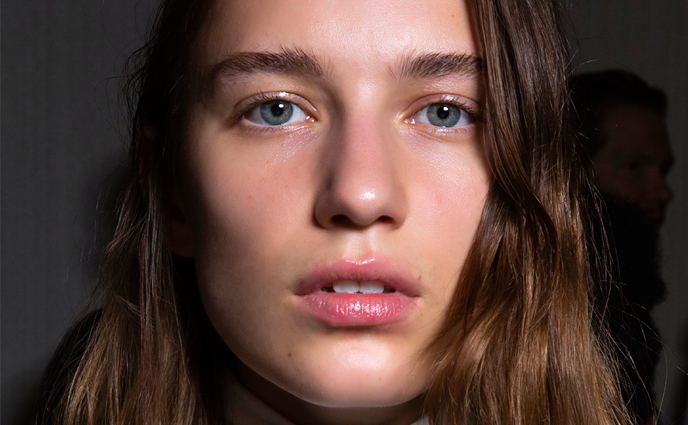Kaia Gerber knows it. So does Taylor Swift: There may never be a lower-stakes time to DIY pink, peach, or blue hair color than now. With work-from-home mandates still largely in play, trying temporary, wash-away hair color is an easy way to breathe new life into your look (and break up the monotony of pandemic life, too).
But even if pastel or rainbow-bright hair isn't your thing, reaching for color-depositing shampoos, conditioners and masks can also go a long way in boosting the depth of more natural hair colors (and okay, fine... in covering roots, too). That's why we're turning to foolproof color-depositing hair products to do the heavy lifting as we continue to navigate the space between regular salon appointments and whatever this is. (Because let's face it: as salons open and close under state mandates, and as another wave of COVID cases is expected in the upcoming months, getting a professional appointment has never been so up in the air.)
Ahead, find the best way to wash, condition and mask your way to a temporary color job at home without damaging hair health, all while gleaning pro tips from colorist and R+Co collective member, Richy Kandasamy.
Image via Imaxtree
On-set hair stylists in Hollywood turn to this color-depositing conditioner to make drastic hair color changes on actors that washes right out once the director yells, "cut!". (On the set of "Once Upon a Time In Hollywood," hair department head Janine Thompson used shades of pink and gold to capture just the right shade of 60s blonde. Meanwhile, Zendaya used the brand's Copper Conditioner Kit, $56, for her 2019 Emmy Awards look.) At home, we found playing colorist to be just as simple: We mixed pastel purple and red conditioners to turn our dusty blonde hair the coolest shade of blush.
January Jones recently used this color-depositing conditioner in red to turn her icy-blonde hair the coolest pink hue. But the formula, which comes in an array of natural hair shades, can also be used to cover grey or enrich brown, chocolate, golden blonde and copper colors, too. To land on the shade that most closely matches your natural tone, Kandasamy offers this tip: "Because you are depositing color for depth and tone, opt for a shade lighter than your actual color. This will keep the final shade from looking too dark in the end," he says.
Colorist Guy Tang (who arguably started the whole rose gold color trend) has created a way to DIY the look without booking an impossible-to-get appointment with the man himself. On platinum hair, mixing this shade with the brand's Lavender Lust color, $20.99, will create a cool hybridized shade that reflects as dusty lavender and rosé. Meanwhile, darker shades of blonde that carry golden tones can create a more peachy color (as seen on Emma Roberts) using the product.
To keep color on the lighter side, Kandasamy advises setting a timer when conditioning just like your colorist would do in a salon. "Keeping processing time under 5 - 10 mins will yield a softer end result," he says.
Looking to maintain that pricey, in-salon color job but aren't able to book an appointment for the foreseeable future? Kandasamy suggests maintaining what your colorist gave you by washing with a gentle shampoo that offers UV protection, but is free of parabens and sulfates (like R+Co Gemstone Color Shampoo, $32). Accent washes with a deep conditioning mask that deposits color, like this one, which comes in seven natural shades and enhances color in five-minutes time.
Want to make sure you dupe your salon-made shade with precision? Try this tip from Kandasamy: "Test the mask on a strand or a white tissue to see the intensity of the colour. If the pigment is too strong, just mix it with a regular shampoo or conditioner to dilute."









